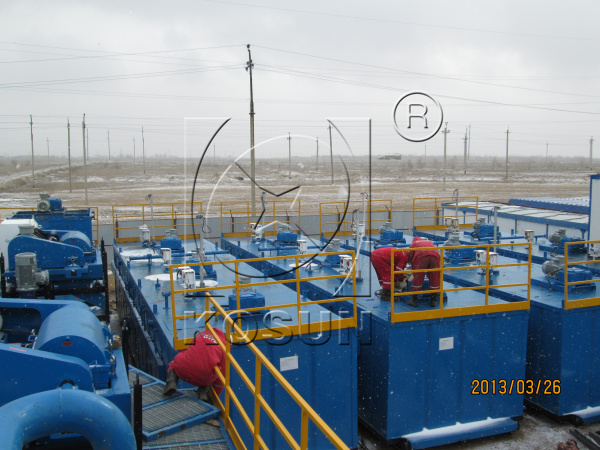Jan 04, 2015
Solid content is a fraction total solid in drilling mud, and it always increases while drilling ahead because of drilling solid (cuttings), mud chemical additives and weighting material. When we talk about the solid content, we always mean soluble and insoluble solid content in the drilling fluid system.
There are three types of solid contents as listed below;
- Soluble material such as salt
- Insoluble high gravity solid (HGS) as weighting agents (barite, calcium carbonate, hematite, etc.)
- Insoluble low gravity solid (LGS) or drilled solid as solids particles from cuttings

The drilling solids are the worst solid content in the drilling fluid because it gradually deteriorates mud properties. Moreover, if its particle size is less than 5 microns, these drill solids could not be removed by mechanical methods, and they will stay in the mud forever. Generally, the drill solids will take 6-7 percent of total mud volume. Since the drilled solid content is very important, it must be checked daily. For good drilling practices, the drilled solid should be tested twice a day by retorting. The upper limit of the drill solid faction should be 6-7 % by volume or approximately 55 – 60 lb/bbl. Please remember that this figure is general rule of thumb. Practically, you can drill with more solid content for a while but over all performance will be down.
Another value besides the LGS and HGS that you must contemplate is the average density of solids in the drilling fluid. I will explain why this figure is important and what it tells us. The weighting materials as barite, Calcium Carbonate, etc have a specific gravity value about 4.2. However, the drilled solids as clay and silt have a less specific gravity about 2.6. The average solid density means the relative concentrations of both the weighting agent and the drilled solid. Normally, the acceptable value of the average solid density is about 3.8 or higher. If you see this value below 3.8, it indicates that there may be too much low gravity solid in the mud.
So we need to remove the solid in the drilling fluid and keep the performance of drilling fluid.Usually the drilling mud solids control equipment and system will be applied in to clean the drilling fluid.
A typical solids control system will employ a combination of shaker, hydrocyclone, mixing, pump and compartmentalized tank technologies. The shaker is vital to the solids control system and is considered the first line of defense. Located directly downstream from the oilfield shale shaker will likely be a hydrocyclone assembly that will employ desilters, desanders or both. Though still considered rare, centrifuge-enable solids control systems are becoming more popular. By adding a drilling centrifuge, the solids control system will achieve the highest level of cut available within the market today.